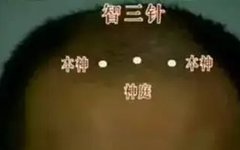The marvelous “Three Needle” techniques include the Si Shen Zhen (Four Spirit Needles) with Bai Hui (Hundred Meetings) located 1.5 cun to the front, back, left, and right.
Indications: Intellectual disability, dementia, headache, dizziness.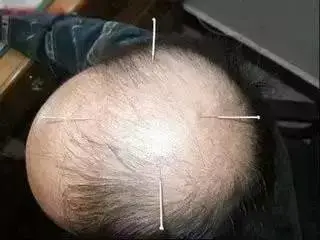 First Needle: Shen Ting (Spirit Court) is located 0.5 cun directly above the hairline at the center of the forehead. Second and Third Needles: Shen Men (Spirit Gate) are located at the intersection of the inner two-thirds and outer one-third of the line connecting Shen Ting and Tou Wei (Head’s Crown), 0.5 cun above the hairline. Indications: Intellectual disability, mental disorders.
First Needle: Shen Ting (Spirit Court) is located 0.5 cun directly above the hairline at the center of the forehead. Second and Third Needles: Shen Men (Spirit Gate) are located at the intersection of the inner two-thirds and outer one-third of the line connecting Shen Ting and Tou Wei (Head’s Crown), 0.5 cun above the hairline. Indications: Intellectual disability, mental disorders.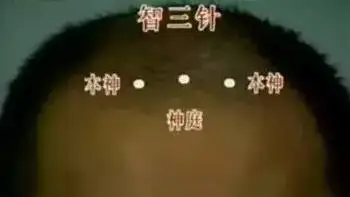 Third Needle: The Shen San Zhen (Three Needles of the Tongue) is applied with the thumb and index finger placed horizontally at the anterior edge of the mandible, with the tip of the thumb as the first needle, and the second and third needles placed 1 cun to the left and right. Indications: Speech disorders, unclear pronunciation, inability to speak, drooling, swallowing difficulties.
Fourth Needle: The San Zhen (Three Needles of the Temple) is located 2 cun above the ear apex for the first needle, with the second and third needles placed 1 cun to the front and back at the same level. Indications: Sequelae of cerebrovascular accidents, hemiplegia due to head trauma, cerebral arteriosclerosis, tinnitus, deafness, migraine, Parkinson’s disease, brain atrophy, senile dementia.
Fifth Needle: The Ding Shen Zhen (Settling Spirit Needle) is located 0.5 cun above the Yin Tang (Hall of Impression) for the first needle, 0.5 cun above the left Yang Bai (Yang White) for the second needle, and 0.5 cun above the right Yang Bai for the third needle. Indications: Lack of concentration, strabismus, frontal headache, nystagmus, dizziness, decreased vision. Needling Technique: Insert the needle perpendicularly 0.5-0.8 cun deep, applying pressure with a cotton ball at the needle site to prevent bleeding upon withdrawal.
Sixth Needle: The Yun Tong Zhen (Dizziness Pain Needle) combines the Si Shen Zhen with Yin Tang and Tai Yang (Sun). Indications: Dizziness, headache, vertex pain, frontal pain. Needling Technique: Insert the needle 0.5 to 0.8 cun deep, being cautious of hard tissue beneath the skin to avoid deep insertion.
Facial Needles: 1. For eyelid spasms: Si Bai (Four Whites) and Lower Eyelid Ah Shi points. 2. For oral muscle spasms: Di Cang (Earth Warehouse), He Liao (Joining Fragrance), Ying Xiang (Welcome Fragrance). Needling Technique: Insert Si Bai directly or obliquely 0.5-0.8 cun; Lower Eyelid Ah Shi horizontally 0.5 cun towards the nose; Di Cang horizontally 0.5-0.8 cun towards the cheek; He Liao horizontally 0.8 cun downwards, applying electroacupuncture with continuous waves.
Three Needles for Facial Paralysis: 1. For forehead paralysis: Yang Bai, Tai Yang, Si Bai. 2. For oral facial paralysis: Yi Feng, Ying Xiang, Di Cang penetrating Jia Che (Cheek Car) and Ren Zhong (Human Center). Indications: Facial nerve paralysis, stroke with facial asymmetry. Needling Technique: Insert Yi Feng directly 0.8-1 cun forward from the central depression behind the ear. Insert Ren Zhong obliquely upwards 0.5 cun deep. Other points follow their respective needling techniques, twisting the needle every 5-10 minutes and retaining for 30-40 minutes.
Three Needles for Thyroid Issues: Shui Tu, Fu Tu, Tian Tu. Indications: Goiter, thyroid cysts. Needling Technique: Insert Shui Tu obliquely towards the trachea 0.5-0.7 cun; Fu Tu similarly; Tian Tu first 0.3 cun deep, then angle the needle towards the sternum for another 0.3 cun. After needling, do not lift the needle, only twist or scrape for 30 minutes.
Three Eye Needles: Eye I is located 1 fen above Qing Ming (Clear Bright), Eye II is directly below the pupil, between the lower orbital margin and the eyeball. Eye III is directly above the pupil, between the upper orbital margin and the eyeball. Indications: Optic nerve atrophy, retinitis, macular degeneration, amblyopia, and other internal eye diseases. Needling Technique: Instruct the patient to close their eyes, stabilize the eyeball with the left hand, and insert the needle slowly with the right hand, twisting gently. Do not twist or lift the needle after insertion; use the thumbnail to lightly scrape the needle handle. Upon withdrawal, apply gentle pressure with a dry cotton ball to prevent bleeding.
Three Nose Needles: Ying Xiang, Bi Tong (Upper Ying Xiang), Yin Tang or Cuanzhu (Gathering Bamboo). Indications: Allergic rhinitis, acute rhinitis, sinusitis, epistaxis, olfactory disorders. Needling Technique: Insert Ying Xiang horizontally towards the nasal wing 5-8 fen, Bi Tong downwards 5 fen, and Cuanzhu or Yin Tang downwards 3-5 fen.
Three Ear Needles: Ting Gong, Ting Hui, Wan Gu. Indications: Deafness, tinnitus. Needling Technique: Insert Ting Gong and Ting Hui directly 1-1.5 cun deep with the mouth open, and Wan Gu 1-1.5 cun deep upwards. After needling, do not lift the needle, only twist or scrape.
Three Hand Needles: He Gu, Qu Chi, Wai Guan. Indications: Upper limb paralysis, numbness, pain, sensory disturbances. Needling Technique: Insert He Gu and Wai Guan directly 0.8-1.2 cun deep, and Qu Chi 1-1.2 cun deep.
Three Foot Needles: Zu San Li, San Yin Jiao, Tai Chong. Indications: Lower limb sensory or motor disturbances, lower limb paralysis, pain. Needling Technique: Insert Zu San Li and San Yin Jiao directly 1-1.5 cun, and Tai Chong directly 5-8 fen deep.
Three Hand Wisdom Needles: Nei Guan, Shen Men, Lao Gong. Indications: Hyperactive children with intellectual disabilities, hyperactivity, epilepsy, insomnia. Needling Technique: All three points are inserted directly 0.5-0.8 fen deep.
Three Foot Wisdom Needles: Yong Quan (Yong Spring) is the first needle, the midpoint of the line connecting the toe joints to the posterior edge of the heel is the second needle (Qian Zhong), and the third needle is 1 finger breadth inward from the second needle (Qian Zhong Nei). Indications: Autism in hyperactive children, lack of movement, inability to speak. Needling Technique: All needles are inserted directly 0.5-0.8 cun deep.
Three Shoulder Needles: Jian Yu is the first needle, 2 cun forward at the same level is the second needle, and 2 cun backward at the same level is the third needle. Indications: Shoulder periarthritis, shoulder joint inflammation, upper limb paralysis, inability to raise the shoulder. Needling Technique: Insert the needle at a 90° angle to the point, directly 0.8-1 cun deep, being careful not to insert too deeply to avoid puncturing the thoracic cavity.
Third Needle: The Shen San Zhen (Three Needles of the Tongue) is applied with the thumb and index finger placed horizontally at the anterior edge of the mandible, with the tip of the thumb as the first needle, and the second and third needles placed 1 cun to the left and right. Indications: Speech disorders, unclear pronunciation, inability to speak, drooling, swallowing difficulties.
Fourth Needle: The San Zhen (Three Needles of the Temple) is located 2 cun above the ear apex for the first needle, with the second and third needles placed 1 cun to the front and back at the same level. Indications: Sequelae of cerebrovascular accidents, hemiplegia due to head trauma, cerebral arteriosclerosis, tinnitus, deafness, migraine, Parkinson’s disease, brain atrophy, senile dementia.
Fifth Needle: The Ding Shen Zhen (Settling Spirit Needle) is located 0.5 cun above the Yin Tang (Hall of Impression) for the first needle, 0.5 cun above the left Yang Bai (Yang White) for the second needle, and 0.5 cun above the right Yang Bai for the third needle. Indications: Lack of concentration, strabismus, frontal headache, nystagmus, dizziness, decreased vision. Needling Technique: Insert the needle perpendicularly 0.5-0.8 cun deep, applying pressure with a cotton ball at the needle site to prevent bleeding upon withdrawal.
Sixth Needle: The Yun Tong Zhen (Dizziness Pain Needle) combines the Si Shen Zhen with Yin Tang and Tai Yang (Sun). Indications: Dizziness, headache, vertex pain, frontal pain. Needling Technique: Insert the needle 0.5 to 0.8 cun deep, being cautious of hard tissue beneath the skin to avoid deep insertion.
Facial Needles: 1. For eyelid spasms: Si Bai (Four Whites) and Lower Eyelid Ah Shi points. 2. For oral muscle spasms: Di Cang (Earth Warehouse), He Liao (Joining Fragrance), Ying Xiang (Welcome Fragrance). Needling Technique: Insert Si Bai directly or obliquely 0.5-0.8 cun; Lower Eyelid Ah Shi horizontally 0.5 cun towards the nose; Di Cang horizontally 0.5-0.8 cun towards the cheek; He Liao horizontally 0.8 cun downwards, applying electroacupuncture with continuous waves.
Three Needles for Facial Paralysis: 1. For forehead paralysis: Yang Bai, Tai Yang, Si Bai. 2. For oral facial paralysis: Yi Feng, Ying Xiang, Di Cang penetrating Jia Che (Cheek Car) and Ren Zhong (Human Center). Indications: Facial nerve paralysis, stroke with facial asymmetry. Needling Technique: Insert Yi Feng directly 0.8-1 cun forward from the central depression behind the ear. Insert Ren Zhong obliquely upwards 0.5 cun deep. Other points follow their respective needling techniques, twisting the needle every 5-10 minutes and retaining for 30-40 minutes.
Three Needles for Thyroid Issues: Shui Tu, Fu Tu, Tian Tu. Indications: Goiter, thyroid cysts. Needling Technique: Insert Shui Tu obliquely towards the trachea 0.5-0.7 cun; Fu Tu similarly; Tian Tu first 0.3 cun deep, then angle the needle towards the sternum for another 0.3 cun. After needling, do not lift the needle, only twist or scrape for 30 minutes.
Three Eye Needles: Eye I is located 1 fen above Qing Ming (Clear Bright), Eye II is directly below the pupil, between the lower orbital margin and the eyeball. Eye III is directly above the pupil, between the upper orbital margin and the eyeball. Indications: Optic nerve atrophy, retinitis, macular degeneration, amblyopia, and other internal eye diseases. Needling Technique: Instruct the patient to close their eyes, stabilize the eyeball with the left hand, and insert the needle slowly with the right hand, twisting gently. Do not twist or lift the needle after insertion; use the thumbnail to lightly scrape the needle handle. Upon withdrawal, apply gentle pressure with a dry cotton ball to prevent bleeding.
Three Nose Needles: Ying Xiang, Bi Tong (Upper Ying Xiang), Yin Tang or Cuanzhu (Gathering Bamboo). Indications: Allergic rhinitis, acute rhinitis, sinusitis, epistaxis, olfactory disorders. Needling Technique: Insert Ying Xiang horizontally towards the nasal wing 5-8 fen, Bi Tong downwards 5 fen, and Cuanzhu or Yin Tang downwards 3-5 fen.
Three Ear Needles: Ting Gong, Ting Hui, Wan Gu. Indications: Deafness, tinnitus. Needling Technique: Insert Ting Gong and Ting Hui directly 1-1.5 cun deep with the mouth open, and Wan Gu 1-1.5 cun deep upwards. After needling, do not lift the needle, only twist or scrape.
Three Hand Needles: He Gu, Qu Chi, Wai Guan. Indications: Upper limb paralysis, numbness, pain, sensory disturbances. Needling Technique: Insert He Gu and Wai Guan directly 0.8-1.2 cun deep, and Qu Chi 1-1.2 cun deep.
Three Foot Needles: Zu San Li, San Yin Jiao, Tai Chong. Indications: Lower limb sensory or motor disturbances, lower limb paralysis, pain. Needling Technique: Insert Zu San Li and San Yin Jiao directly 1-1.5 cun, and Tai Chong directly 5-8 fen deep.
Three Hand Wisdom Needles: Nei Guan, Shen Men, Lao Gong. Indications: Hyperactive children with intellectual disabilities, hyperactivity, epilepsy, insomnia. Needling Technique: All three points are inserted directly 0.5-0.8 fen deep.
Three Foot Wisdom Needles: Yong Quan (Yong Spring) is the first needle, the midpoint of the line connecting the toe joints to the posterior edge of the heel is the second needle (Qian Zhong), and the third needle is 1 finger breadth inward from the second needle (Qian Zhong Nei). Indications: Autism in hyperactive children, lack of movement, inability to speak. Needling Technique: All needles are inserted directly 0.5-0.8 cun deep.
Three Shoulder Needles: Jian Yu is the first needle, 2 cun forward at the same level is the second needle, and 2 cun backward at the same level is the third needle. Indications: Shoulder periarthritis, shoulder joint inflammation, upper limb paralysis, inability to raise the shoulder. Needling Technique: Insert the needle at a 90° angle to the point, directly 0.8-1 cun deep, being careful not to insert too deeply to avoid puncturing the thoracic cavity.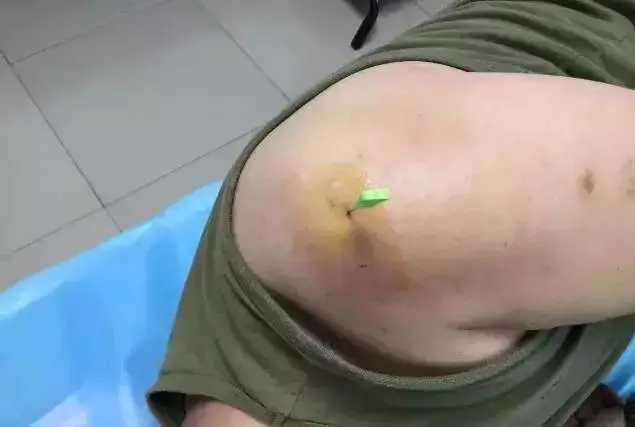 Three Knee Needles: Xi Yan, Liang Qiu, Xue Hai. Indications: Knee joint swelling, pain, or weakness, knee osteophytes. Needling Technique: Insert directly 0.8-1.2 cun deep. Electroacupuncture with continuous waves, infrared, and cupping can be added.
Three Lumbar Needles: Shen Shu, Da Chang Shu, Wei Zhong. Indications: Low back pain, lumbar hyperplasia, lumbar muscle strain, sexual dysfunction, nocturnal emissions, impotence, menstrual irregularities. Needling Technique: All needles are inserted directly 1.2-1.5 cun deep (similar to the three knee needles).
Three Neck Needles: Tian Zhu, Bai Lao, Da Zhu. Indications: Cervical spondylosis, neck stiffness. Needling Technique: All three points are inserted directly 0.8-1 cun deep. Avoid deep insertion to prevent injury to internal organs, similar to the three knee needles.
Three Back Needles: Da Zhu, Feng Men, Fei Shu. Indications: Bronchitis, asthma, back pain. Needling Technique: Insert obliquely towards the spine 0.5-0.7 cun deep. Avoid deep insertion to prevent injury to internal organs.
Three Ankle Needles: Jie Xi, Tai Xi, Kun Lun. Indications: Ankle joint swelling, pain, activity restrictions, heel pain. Needling Technique: All needles are inserted directly 0.8-1 cun deep.
Three Knee Needles: Xi Yan, Liang Qiu, Xue Hai. Indications: Knee joint swelling, pain, or weakness, knee osteophytes. Needling Technique: Insert directly 0.8-1.2 cun deep. Electroacupuncture with continuous waves, infrared, and cupping can be added.
Three Lumbar Needles: Shen Shu, Da Chang Shu, Wei Zhong. Indications: Low back pain, lumbar hyperplasia, lumbar muscle strain, sexual dysfunction, nocturnal emissions, impotence, menstrual irregularities. Needling Technique: All needles are inserted directly 1.2-1.5 cun deep (similar to the three knee needles).
Three Neck Needles: Tian Zhu, Bai Lao, Da Zhu. Indications: Cervical spondylosis, neck stiffness. Needling Technique: All three points are inserted directly 0.8-1 cun deep. Avoid deep insertion to prevent injury to internal organs, similar to the three knee needles.
Three Back Needles: Da Zhu, Feng Men, Fei Shu. Indications: Bronchitis, asthma, back pain. Needling Technique: Insert obliquely towards the spine 0.5-0.7 cun deep. Avoid deep insertion to prevent injury to internal organs.
Three Ankle Needles: Jie Xi, Tai Xi, Kun Lun. Indications: Ankle joint swelling, pain, activity restrictions, heel pain. Needling Technique: All needles are inserted directly 0.8-1 cun deep.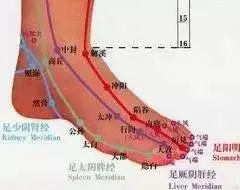 Sciatic Needles: Sciatic Point, Wei Zhong, Kun Lun. The sciatic point is located at the end of the gluteal fold in the prone position, with fingers 2, 3, 4, and 5 together, the point is at the same height as the end of the gluteal fold. Indications: Sciatica. Needling Technique: For the sciatic point, use a holding technique with a 3-4 inch long needle wrapped in an alcohol cotton ball, exposing the needle tip, inserting it vertically into the skin, and after penetrating the skin, use the left hand to hold the cotton ball and support the needle body, twisting the needle handle while inserting about 2 inches deep until the patient feels numbness radiating to the toes, then stop. Insert Wei Zhong and Kun Lun directly 0.8-1.2 cun deep. Use electroacupuncture connecting the sciatic point and Wei Zhong with continuous waves, adjusting the intensity to the patient’s tolerance, retaining the needles for 30 minutes, and adjusting the electroacupuncture intensity every 5-10 minutes, up to 2-3 times.
Sciatic Needles: Sciatic Point, Wei Zhong, Kun Lun. The sciatic point is located at the end of the gluteal fold in the prone position, with fingers 2, 3, 4, and 5 together, the point is at the same height as the end of the gluteal fold. Indications: Sciatica. Needling Technique: For the sciatic point, use a holding technique with a 3-4 inch long needle wrapped in an alcohol cotton ball, exposing the needle tip, inserting it vertically into the skin, and after penetrating the skin, use the left hand to hold the cotton ball and support the needle body, twisting the needle handle while inserting about 2 inches deep until the patient feels numbness radiating to the toes, then stop. Insert Wei Zhong and Kun Lun directly 0.8-1.2 cun deep. Use electroacupuncture connecting the sciatic point and Wei Zhong with continuous waves, adjusting the intensity to the patient’s tolerance, retaining the needles for 30 minutes, and adjusting the electroacupuncture intensity every 5-10 minutes, up to 2-3 times.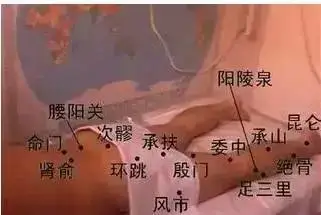 Three Atrophy Needles: For upper limb atrophy: Qu Chi, He Gu, Chi Ze. For lower limb atrophy: Zu San Li, San Yin Jiao, Tai Xi. Indications: Atrophy syndrome (muscle weakness, lack of strength, activity restrictions). Needling Technique: All points are inserted directly 0.8-1.2 cun deep, using a tonifying technique, slow insertion and fast withdrawal, with the heat sensation under the needle as a guide, retaining the needles for 40 minutes, performing tonification 5 times or more, and electroacupuncture with continuous waves at a moderate intensity, with 30 treatments per course.
Three Fat Needles: Zhong Wan, Da Mai, Zu San Li. Indications: Obesity, especially abdominal obesity. Needling Technique: Insert Zu San Li directly 1-1.5 cun, Da Mai horizontally towards the navel 3-3.5 cun, and Zhong Wan horizontally towards Guan Yuan 2-3 cun. After insertion, twist the needle every 5-8 minutes, retaining for 30-40 minutes, once daily for 10 treatments, and electroacupuncture can also be used.
Three Epilepsy Needles: Nei Guan, Shen Mai, Zhao Hai. Indications: Epilepsy, foot inversion, foot eversion. Needling Technique: Insert Shen Mai and Zhao Hai directly 0.5-0.8 cun deep.
Three Atrophy Needles: For upper limb atrophy: Qu Chi, He Gu, Chi Ze. For lower limb atrophy: Zu San Li, San Yin Jiao, Tai Xi. Indications: Atrophy syndrome (muscle weakness, lack of strength, activity restrictions). Needling Technique: All points are inserted directly 0.8-1.2 cun deep, using a tonifying technique, slow insertion and fast withdrawal, with the heat sensation under the needle as a guide, retaining the needles for 40 minutes, performing tonification 5 times or more, and electroacupuncture with continuous waves at a moderate intensity, with 30 treatments per course.
Three Fat Needles: Zhong Wan, Da Mai, Zu San Li. Indications: Obesity, especially abdominal obesity. Needling Technique: Insert Zu San Li directly 1-1.5 cun, Da Mai horizontally towards the navel 3-3.5 cun, and Zhong Wan horizontally towards Guan Yuan 2-3 cun. After insertion, twist the needle every 5-8 minutes, retaining for 30-40 minutes, once daily for 10 treatments, and electroacupuncture can also be used.
Three Epilepsy Needles: Nei Guan, Shen Mai, Zhao Hai. Indications: Epilepsy, foot inversion, foot eversion. Needling Technique: Insert Shen Mai and Zhao Hai directly 0.5-0.8 cun deep.





